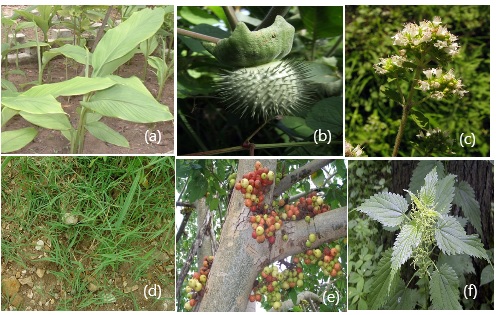Role of Plants in Different Religious Ceremonies Common to Uttarakhand Region

DOI:
https://doi.org/10.54060/ijahr.v1i1.4Keywords:
Religious ceremony, Uttarakhand, Ethanobotany, Medicinal valuesAbstract
Many traditional religious ceremonies and festivals in India are associated with specific plants. Association of plants like Azadiracta indica with Gudipadva, Ficus benghalensis with vatpurnima, Bauhinia racemosa with dashara and Ocimum sanctum with tulsi vivaha is well known. The present study deals with some of the important plants such as Ficus religiosa (peepal), Ficus benghalensis (vat), Ocimum sanctum etc. which are related to pujas or other religious ceremonies in which they are offered by the women of Uttarakhand region.
Downloads
References
Agharkar SP, Rao, PSM. Maharashtra state gazetteer: General series volume A botany (part III-miscellaneous plants), govt. Central press, 1961, Bombay, rev. Ed [Internet]. INDIAN CULTURE. [cited 2023 Jan 2]. Available from: https://www.indianculture.gov.in/gazettes/maharashtra-state-gazetteer-general-series-volume-botany-part-iii-miscellaneous-plants-rev
Azaizeh H, Fulder S, Khalil K, Said O. Ethnobotanical knowledge of local Arab practitioners in the Middle Eastern region. Fitoterapia [Internet]. 2003;74(1–2):98–108. Available from: http://dx.doi.org/10.1016/s0367-326x(02)00285-x
Badoni A, Badoni K, Ethnobotanical Haritage. In: Kandari O.P., Gusain O.P., eds. Garhawal Himalaya: Nature, Culture & Society. Trans Media Srina-gar (Garhwal). 2001; 125-47.
Farrukh A, Iqbal A, Broad-spectrum antibacterial and antifungal properties of certain traditionally used Indian medicinal plant, World J. Microbiol Biotechnol [Internet]. 2003;19(6):653–7. Available from: http://dx.doi.org/10.1023/a:1025128104056
Ghate VS, Plants in Patra-Pooja: notes on their identity and utilization. Ethanobotany. 1998; 10 :6-15.
Khare CP, Encyclopedia of Indian medicinal plants. Berlin Heidelberg, New York: Springer-Verlag. 2004; 1(3):50–8.
Sahu TR, Biodiversity conservation of Baster (MP) in traditional and religious context. In biodiversity taxonomy and ecology. Tendon RK and Prithipal Singh (eds). Scientific publishers,1999; 55-64.
Sharma UK, Pegu S. Ethnobotany of religious and supernatural beliefs of the Mising tribes of Assam with special reference to the “Dobur Uie.” J Ethnobiol Ethnomed [Internet]. 2011;7(1). Available from: http://dx.doi.org/10.1186/1746-4269-7-16.
Sheldon JW, Balick MJ, & Laird SA, Medicinal Plants: can utilization and conservation coexist? Advances in Economic Botany, Econ Bot. 1997;12:101-104.
Valsaraj R, Pushpangadan P, Smitt UW, Adsersen A, Nyman U. Antimicrobial screening of selected medicinal plants from India. J Ethnopharmacol [Internet]. 1997;58(2):75–83. Available from: http://dx.doi.org/10.1016/s0378-8741(97)00085-8
Kala CP. Traditional ecological knowledge, sacred groves and conservation of biodiversity in the pachmarhi biosphere reserve of India. J Environ Prot (Irvine Calif) [Internet]. 2011;02(07):967–73. Available from: http://dx.doi.org/10.4236/jep.2011.27111

Published
How to Cite
CITATION COUNT
Issue
Section
License
Copyright (c) 2023 Dr. Maneesha Singh

This work is licensed under a Creative Commons Attribution 4.0 International License.























